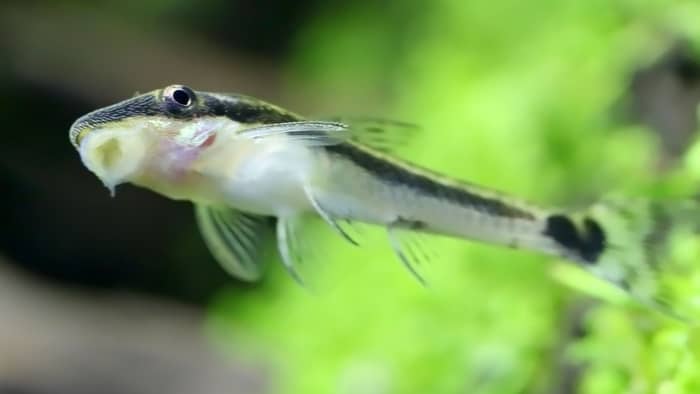Last Updated on November 8, 2021 by Marco C.
Algae is nature’s friend, but an aquaponics owner’s nightmare when it gets out of control. This guide will tell you all you need to know about getting rid of algae in a fish tank.
If left unchecked, algae can quickly take over your whole tank system to the point of no return. It is important that you know how to get rid of algae in a fish tank as soon as you see the first signs.
Before we go into details, let’s explore more about this beautiful plant first.
What Is Algae?
Algae refers to many types of aquatic plants that thrive in wet atmospheres. Some plants that fall under this category are brown algae, seaweed, green algae, and many more. The most common algae people find in their fish tanks is brown or green algae.
You will be able to tell the two apart from its color. They both grow in similar conditions so controlling it will be done in the same way.
Algae produces their food through using light and photosynthesis. If you can cut off their light source, they will not be able to grow and expand. This tip comes in handy when getting rid of algae in your fish tank.
Is Algae Bad For Plants?
Algae is a naturally occurring phenomena, so it is not inherently bad for your other plants. But, everything is OK in moderation. If your algae gets out of control it will take over your whole system, compromising the health of the plants and fish in your tank.
This is why you should pay careful attention to controlling algae. The good thing is that if it does overtake your tank, it isn’t difficult to remove. Keep in mind, algae is a plant so it will compete with the same nutrients that your other plants need.
If you worry your algae levels are getting too high, take action immediately. The earlier you do something, the easier it will be to get it all out.
How To Control Algae
A very handy tool to maintain algae levels in your tank is fish! There are certain types of fish that love to eat algae. Stock your tank with a few of these and they will do most of the job for you!
There are a few fish varieties that you can choose from. One most commonly used is the suckermouth catfish. They will stick the sides of your tank and feed off the algae that accumulates there.
The suckermouth catfish eats algae at a slow rate, so if you have a serious problem already this is not going to save you.
One downfall of using suckermouth catfish is that they can grow between 2-3 feet long. If you have a small tank with other fish, this will take up valuable space. This is one benefit of having a larger tank.
There is another smaller version of catfish that is commonly used because they can eat algae very aggressively. This is the Otocinclus, or “Oto.” The nice thing about Otos is that they remain small in size, eat fast, and work together with their school to eat algae.
Putting a handful of Otos in your tank is an easy way to get rid of algae in your fish tank.
Learn more about: Where To Buy Fish For Aquaponics
Fish That Eat Black Algae
If you have Black Algae in your tank you need to use a special type of fish to eat it. Some species that will eat black algae are the chinese algae eater, black molly, and different kinds of Plecos.
The chinese algae eaters are known for being aggressive as they age so keep this in mind when choosing this breed. There are at least a dozen more types of fish that will eat black algae. So do your research and pick the one most suitable for your tank conditions.
How Long Does It Take Algae To Grow
The speed at which algae grows depends on your tank conditions. If you have a full day’s worth of light, algae will grow fast. It also depends on the amount of Nitrogen and Phosphorus in your water.
According to the Nebraska Water Center, algae is an aggressive eater of Nitrogen and Phosphorous. So much so that it can be used to clean waterways that have an excess of these nutrients. Keeping your tank clean of N and K will also help keep algae growth from happening too fast.
In the right conditions, algae will grow within 2-4 weeks. The best thing to control algae growth is catch the problem early. Keep your tank clean and avoid the buildup of excess debris.
Excess debris will create more nitrite which algae thrives off of.
This means do not overfeed your fish! Anything that the fish don’t eat will begin to break down and create nitrites.
If you want to slow down the growth of algae, limit its light supply. Keep in mind, other plants need light to grow. So this decision will affect all the plants in your system.
Getting rid of algae in a fish tank is an important skill to have. As mentioned before, having some algae in your tank is normal and absolutely no threat to your system. The trouble is when it becomes out of control.
Starting your system off with algae eaters in the tank is a great way to naturally keep these levels in check. When making your fish selection, always make sure to check the compatibility of different species. Things to consider are the maximum growth size, water temperature, and spawning habits.
If you don’t keep your tank clean you will inevitably experience algae blooms. Don’t take too long between your water exchanges and tank cleanings. By planning ahead and putting in committed work, you will avoid the hassle of needing to get rid of a large algae problem.
As with everything, start your system off with the right design. It will save you a lot of work in the future!
Please feel free to comment and ask questions below!
Read more about: How To Clean An Empty Fish Tank

Candace is an aquaponics expert with over 5 years of experience in the field. She has a degree in environmental science from the University of California, Berkeley and a degree in aquaponics from the University of Florida. She is passionate about sustainable agriculture and has a deep knowledge of aquaculture and hydroponics. She has worked on numerous projects and has been involved in the development of aquaponic systems and fish farms. She also has experience in designing and constructing aquaponic systems. With her expertise, Candace is able to advise clients on the most effective and efficient way to construct and manage their aquaponic system. She is an active member of the aquaponic community, often speaking at conferences and seminars. Candace is dedicated to helping others understand the importance of aquaponics, and she is a strong advocate for sustainable food production.

